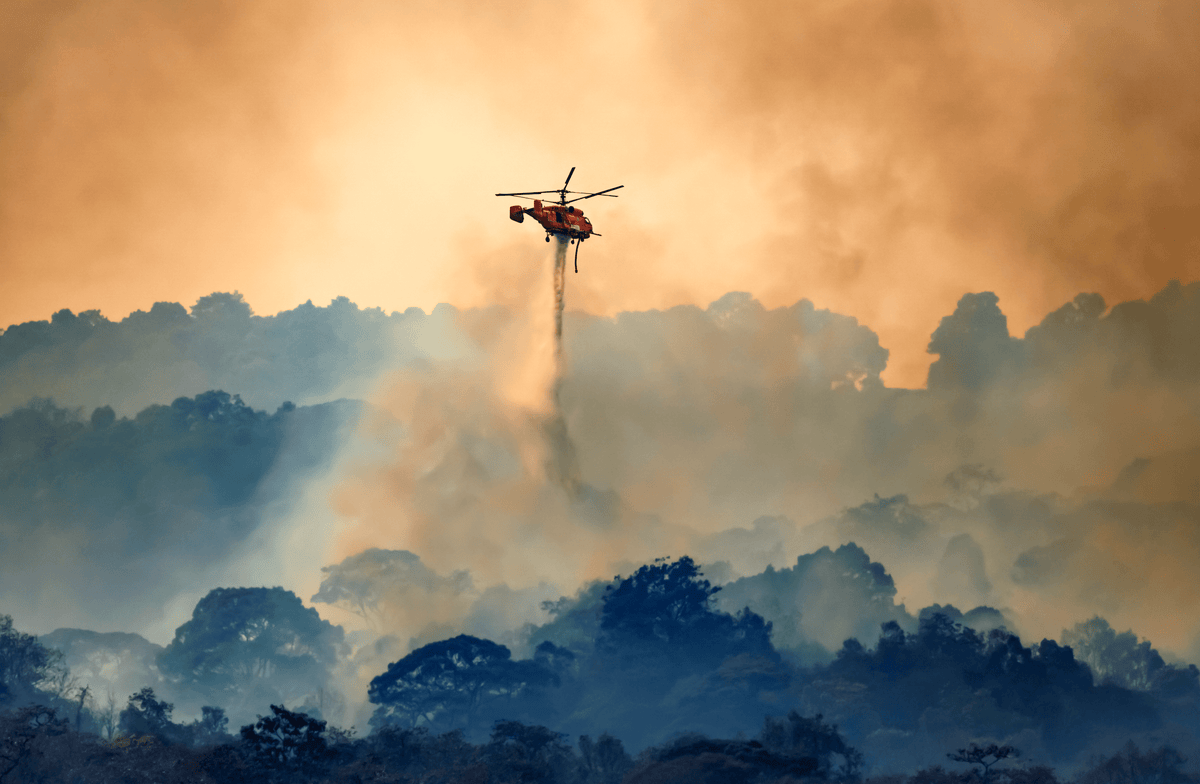The California wildfire season typically stretches from May through October – the hottest and driest part of the year. But these days, climate change has made it so more months have weather conditions that increase the likelihood of wildfires. Worse? Wildfires have gotten more frequent and severe. These California wildfire statistics show how much things have changed.
California’s wildfire risk at a glance
California had more than 7,400 wildfires in 2022, and those fires burned over 331,000 acres. This is an 87% decrease in the number of acres burned from the previous year.
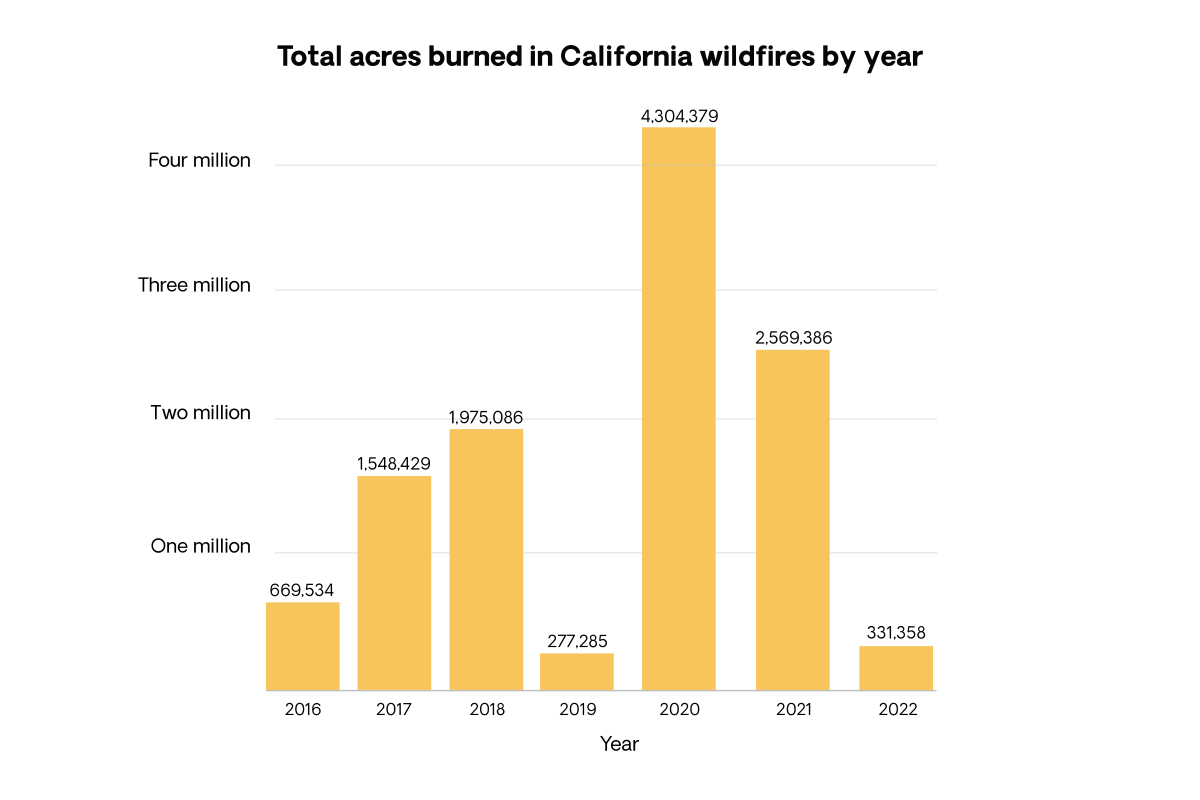
Source: CAL FIRE, Statistics, January 22, 2024.
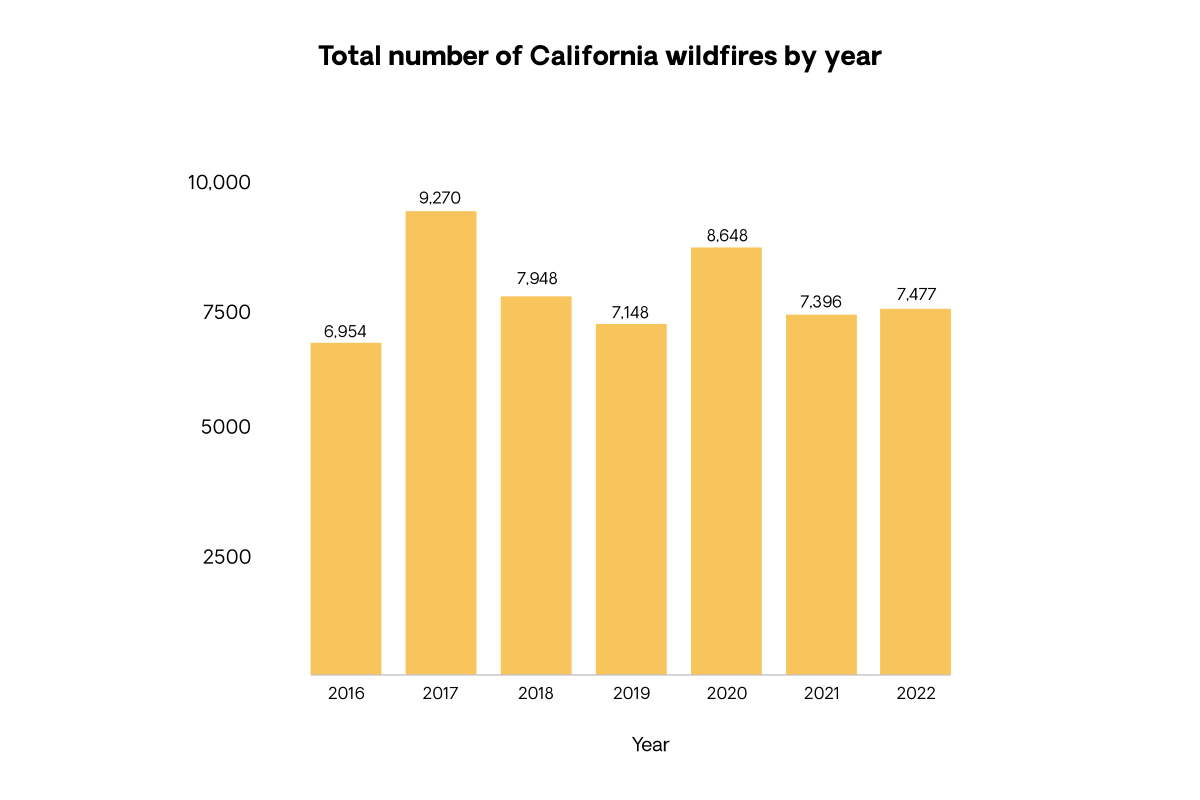 Source: CAL FIRE, Statistics, January 22, 2024.
Source: CAL FIRE, Statistics, January 22, 2024.
Top 10 most destructive wildfires in California
While wildfire activity has actually been somewhat muted in recent years, this is rarely the case. Californias have faced a slew of wildfires all up and down the state for several years. Five of the 10 most destructive wildfires in California burned occurred in just the past five years. Eighteen occurred since 2000.
Though California doesn’t always have the most wildfires of any state, it usually has far more losses. That’s partly because it’s the most populous state in the nation, with nearly 40 million residents. According to the US Fire Administration, the Golden State has the greatest number of houses in the wildland urban interface – putting the homes and the folks who live in them at risk.
In fact, recent data from the Insurance Information Institute indicates that more than 1.2 million California homeowners are at risk of extreme wildfires – more than any other state.
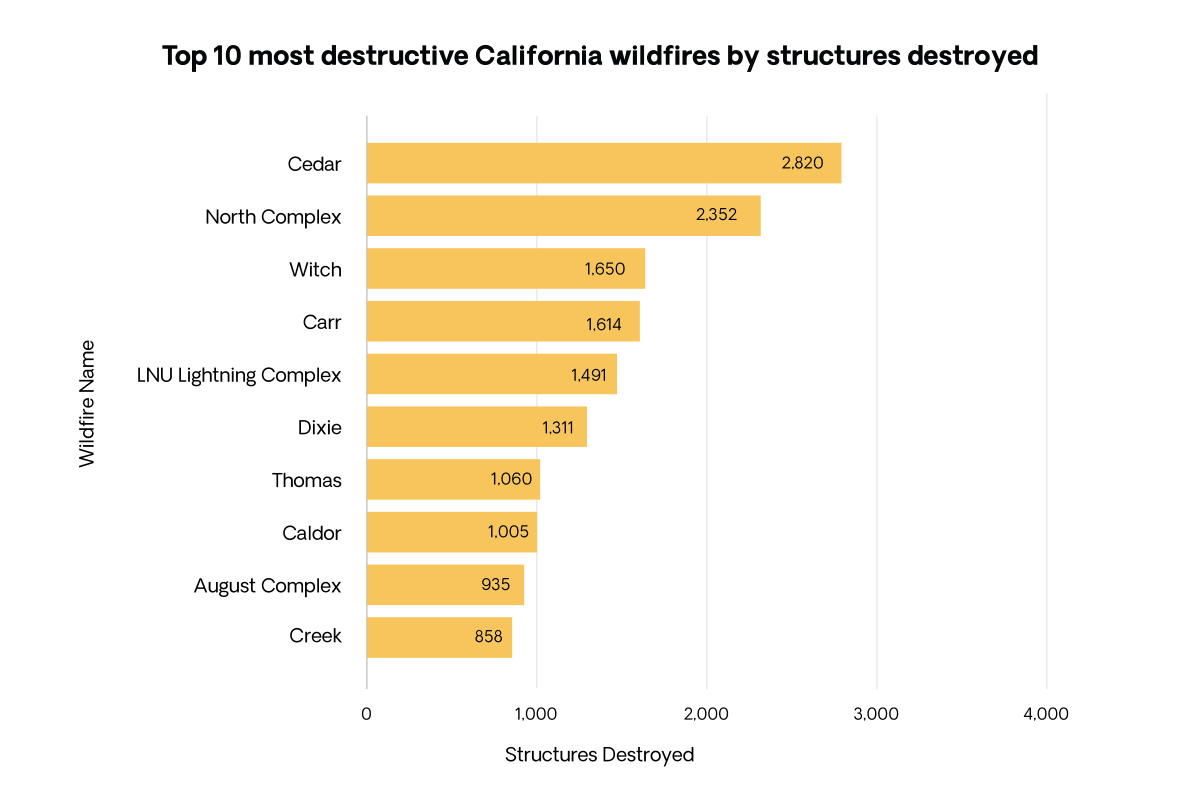
Source: CAL FIRE, Top 20 Most Destructive California Wildfires, October 24, 2022.
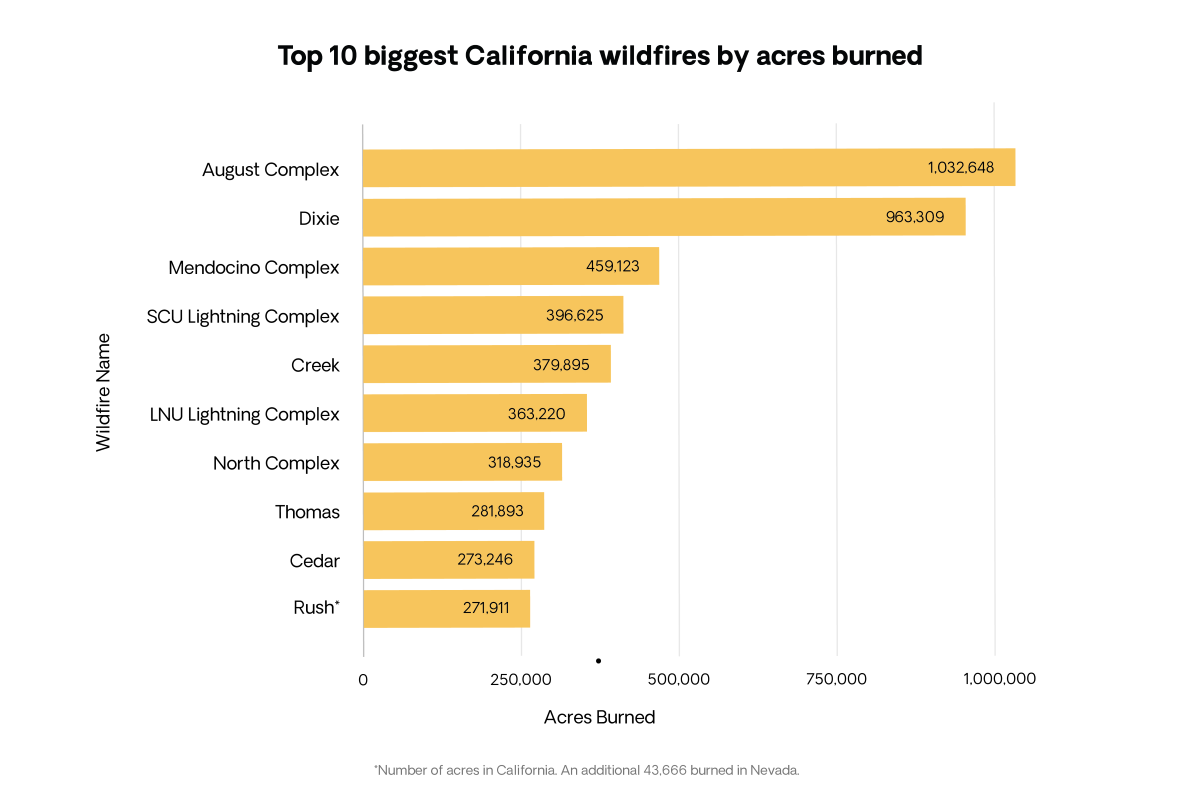
Source: CAL FIRE, Top 20 Largest California Wildfires, October 24, 2022.
Top wildfire causes in California
According to the Los Angeles Times, each of the following have ignited wildfires in California:
-
Power lines / electrical equipment, as seen in the Camp Fire. California’s archaic utility grid can easily cause sparks and ignite nearby lands. These fires often start in remote, difficult-to-reach locations and sweep across mountains and valleys, finding communities along the way.
-
Sparks from vehicles or lawnmowers, which caused the Carr Fire and Zaca Fire, respectively.
-
Signal fires, which caused the Cedar Fire.
-
Lightning, the culprit for the Rush Fire.
-
Humans, through arson, campfires, cigarettes, fireworks, and faulty wiring have all caused fires. One rancher’s mission to plug a wasp’s nest by planting a stake into the ground caused the Mendocino Complex Fire.
However, while the sources of wildfires are numerous, information shared by Axios indicates that humans are the most common cause of wildfires. It reports that data from the US Forestry Service shows 86% of California wildfires started over the past 40 years have been the result of human activity. Cal Fire, on the other hand, puts that percentage at 95%.
The high cost of California wildfires
Wildfire destruction is costly. A study produced by the Betty and Gordon Moore Foundation estimated that wildfires caused roughly $9.9 billion of property damage statewide by wildfires between 2017 and 2021. And that’s just direct physical damage. It doesn’t include indirect damage like labor or market disruptions.
These losses are having lasting impacts on California homeowners, not only as they face costs to protect their homes against wildfires and cover potential property damage. Homeowners insurance in California is also becoming more difficult to get as more and more insurance companies withdraw from the state.
Wildfire insurance is harder to get
An estimated 360,000 California homeowners couldn’t get home insurance after the 2018 wildfire season. Now consider that about 1.2 million California homes are at risk of extreme wildfires.
The sea change toward leaving these homeowners behind isn’t the answer. Folks in hard-hit areas need the resources to rebuild after a fire, just like any other homeowner.
Homeowners who can’t get coverage through private insurance companies are forced to buy policies from the California FAIR Plan. These policies are currently written on a named-perils and actual-cash basis by default, meaning the home is only covered for fire damage and claim payouts subtract the home’s depreciation.

